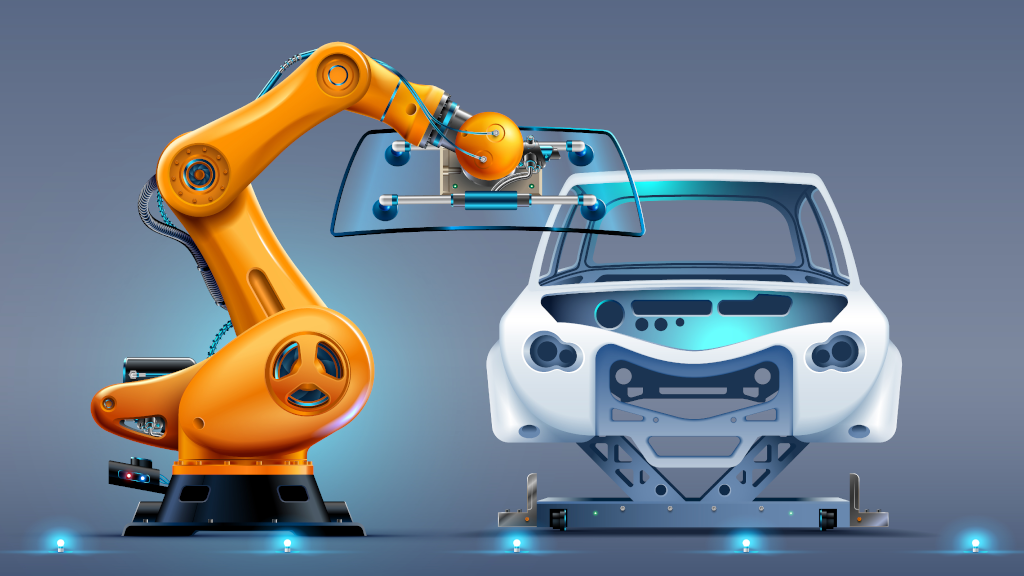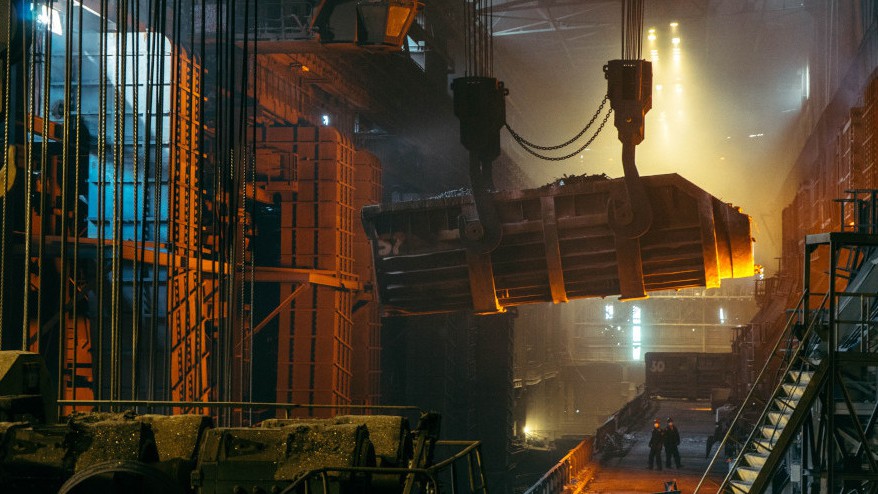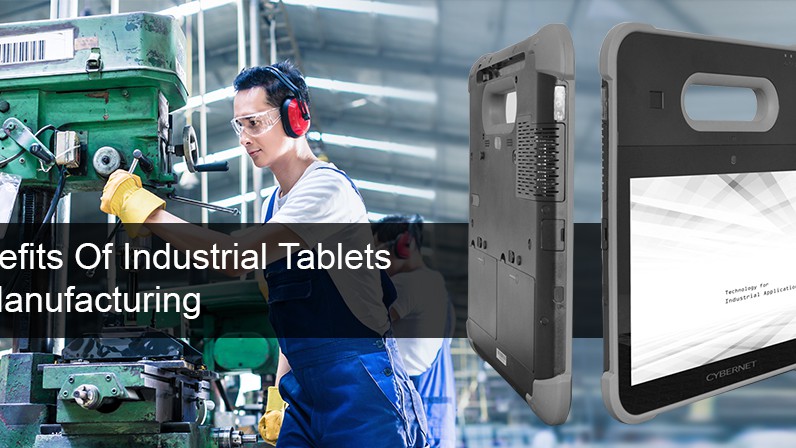We’ve covered before just how impactful the effects of COVID-19 have been across multiple industries, most notably the manufacturing sector. Several entire supply chains are shutting down across the globe and those that aren’t closing in their entirety are still suffering shutdowns in key areas of their supply chains, crippling production if not stopping it outright. Of course, manufacturers have started to address these concerns with tech-based strategies revolving around resourceful applications of industrial PCs.
According to a recently conducted survey, 78% of manufacturers anticipate a financial and operational impact as a result of the coronavirus, with 35% already facing disruption currently. Even these numbers, shocking as they are, were drawn more than a month ago, meaning they don’t even cover the rapid developments in the virus we’ve seen since then. So then, how have industrial computers been employed in order to help manufacturers adapt their supply chains to a pandemic-stricken economy? Here are 4 of the more impactful methods we’ve noticed.
1.) Empowering Supply Chain Visibility
Article Guide
Even outside of a global pandemic supply chain visibility is essential. During a pandemic, it’s even more important since many facilities can be caught off guard as key suppliers in their supply chain suddenly close down without warning. Fortunately, we’ve seen an increase in industrial PCs being used as data hubs for the vast amount of information necessary to maintain proper supply chain visibility.
Using this hardware to keep a close eye on key performance indicators across all of their supply chain partners, manufacturers are able to proactively prepare and respond each day to prospective shutdowns. If KPIs or production seem lacking in one part of their chain, whether that be due to people getting sick or stay at home orders taking effect, decision-makers can immediately respond by delegating some of that work to their own facility or another within their chain.
Of course, proper supply chain visibility also means keeping a close eye on your own internal KPIs, not just those from other parts of your supply chain. To that end, many plants have also started using DIN rail computers throughout the factory floor as data hubs for information drawn in from IoT devices and sensors. Using the insights brought in from this data, manufacturers have been able to run rather effective predictive maintenance programs designed to catch hardware malfunctions before they occur.
When support teams for your hardware are all closing down in the wake of this pandemic, a broken down machine or two can put down your entire operation before the virus and stay at home orders get the chance to. Addressing these breakdowns when symptoms start to make themselves known can save on complete malfunctions whose means of repair, aside from costing a lot, might not even be available.
2.) Becoming Self-Reliant on Part Production and Data Management
One of the biggest lessons that COVID10 taught the industrial sector is that more of our supply chains need to be made internal and self-reliant. If a certain partner in your supply chain is creating a part that you simply can’t continue without, that’s no longer just par for the course, that’s a vulnerability. Many are beginning to understand that these holes in their supply chains are worth patching up as per a recent survey by the National Association of Manufacturers. According to that survey, over half of all manufacturers are now preparing to diversify their supply chains and run more operations in a self-reliant manner. So, how are industrial computers being used to facilitate this change?
Alternative Manufacturing
Alternative manufacturing processes such as 3D printing or CNC machining have helped many manufacturers internalize the process of creating several parts that otherwise would have been made in a different, specialized facility.
HMI Panels, equipped with a 3d printer and additive manufacturing software, for example, allows for manufacturers to create parts by simply loading blueprints and letting the printer create the part on its own while they handle more involved parts of the manufacturing process. Not only does this boost productivity internally, it eliminates a vulnerability in the supply chain by off-loading it to a facility you have more control over.
Edge Computing
Part production isn’t the only thing that can be internalized. Data that would otherwise be sent off to external facilities for processing can instead be processed within the facility where plant managers can be sure their supply chain isn’t compromised.
Data storage sites are just as susceptible to shutdowns as a factory. Fortunately, with Edge Computing, that data can be drawn, stored, and analyzed in-doors, not only eliminating the threat of a data site shutdown, but also making these data-based insights on your factory floor more real-time and responsive, making them much more useful for the predictive maintenance applications we mentioned earlier.
3.) Direct to Consumer Sales
Following this trend of self-reliance, manufacturers are also using industrial computers to eliminate the need for distributors and sell directly to consumers. In order to make that a feasible strategy, proper back end optimization needs to take place to ensure orders are fulfilled and delivered in a timely manner.
Panel mount PCs with RFID scanning capabilities are being set up throughout factory floors so inventory can be scanned in and out, providing real-time updates on inventory that can be stored on inventory management software. Using these updates, plant owners can keep a close eye on their supply and quickly address any shortages or surpluses before they affect their order fulfillment capabilities. From there, it’s as simple as picking an order picking strategy best optimized for their specific industry and clientele.
4.) Protecting Staff Against Infection
Industrial computer applications hardly end at optimization when it comes to preparation against an infectious threat. Many factory managers are realizing the importance of sanitation and safeguarding both equipment and their staff members from infection. With that in mind, investing in hardware that is IP65 certified has become increasingly popular. Devices that are properly protected from ingress are capable of standing up to repeated sanitation and more abrasive, but effective, cleaning products without degradation, meaning no effort needs to be spared when cleaning equipment for fear of a broken machine.
Furthermore, IP65 certified hardware that’s built with a fanless design provides two extra layers of defense. One one end, they protect internal components from breakdown by eliminating the fan that could otherwise suck in debris and moisture. On the other end, they also eliminate the possibility of drawing in and dispersing bacteria through fan circulation that could go on to infect staff.
Facilities that regularly equip their teams with rugged windows tablets are now taking extra precaution to protect both their staff and their hardware by ensuring their devices are fanless and actually IP certified as opposed to simply being marketed as “waterproof” or “dustproof”.
Adaptation is Key During the Coronavirus Outbreak
Manufacturers have optimized their businesses to run in a very particular type of economy, through a very specific supply chain configuration. While this may be helpful during normal days, on days where something like the coronavirus can uproot your entire operation, it’s adaptation that helps you survive. Those that are using the latest technology to become more self-reliant and protective of their staff during this outbreak will be the ones who mitigate the most amount of damage as it runs its course. For more information on the hardware you need to protect your supply chain, reach out to an expert at Cybernet.
The Use of Industrial Computers in the Automotive Industry
August 20, 2019
The automotive industry invented automation: it’s no surprise that they’ve embraced industrial computers faster than any other field of manufacturing. Because automotive manufacturing requires flexible solutions that…
0 Comments7 Minutes
4 Ways Specialized Industrial Computers Increase Safety Levels
January 2, 2019
Safety incidents in factories, manufacturing, and construction have been dropping since the ‘70s, which is fantastic news. However, manufacturing and especially construction still have mortality and injury rates three…
0 Comments9 Minutes
Benefits Of Industrial Tablets In Manufacturing
November 9, 2016
Industrial tablets are becoming increasingly popular in the manufacturing sector. Taking a more pragmatic approach than consumer-focused enterprises, manufacturing environments choose to deploy military grade tablets…
0 Comments8 Minutes
You Can't
Learn from a Pop-up
But we can deliver knowledge to your inbox!
We dive deep in the industry looking for new trends, technology, news, and updates. We're happy to share them with you.
Knowledge, News, and Industry Updates Right in Your Inbox





